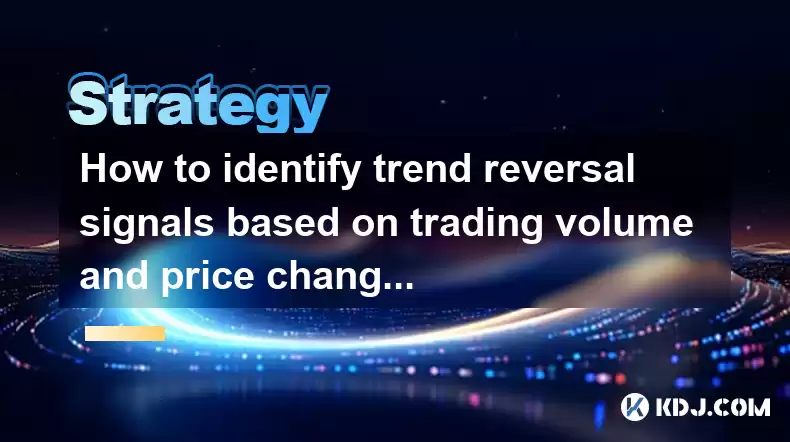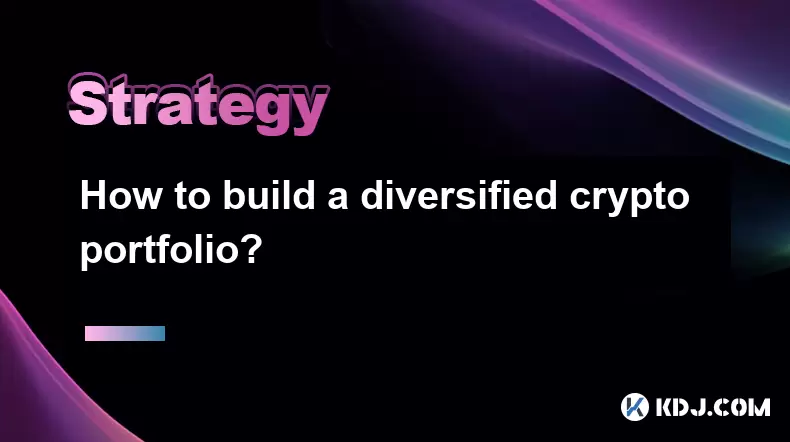-
 Bitcoin
Bitcoin $116400
-0.36% -
 Ethereum
Ethereum $4033
3.40% -
 XRP
XRP $3.302
-1.26% -
 Tether USDt
Tether USDt $1.000
-0.02% -
 BNB
BNB $796.1
1.67% -
 Solana
Solana $177.8
1.89% -
 USDC
USDC $0.9999
0.00% -
 Dogecoin
Dogecoin $0.2314
4.09% -
 TRON
TRON $0.3381
0.14% -
 Cardano
Cardano $0.7989
1.22% -
 Stellar
Stellar $0.4496
-1.84% -
 Chainlink
Chainlink $20.42
9.42% -
 Hyperliquid
Hyperliquid $41.17
0.88% -
 Sui
Sui $3.914
3.77% -
 Bitcoin Cash
Bitcoin Cash $584.7
1.52% -
 Hedera
Hedera $0.2632
-0.54% -
 Avalanche
Avalanche $24.09
3.40% -
 Ethena USDe
Ethena USDe $1.001
-0.02% -
 Litecoin
Litecoin $123.2
1.33% -
 Toncoin
Toncoin $3.318
-0.04% -
 UNUS SED LEO
UNUS SED LEO $8.984
-0.05% -
 Shiba Inu
Shiba Inu $0.00001323
2.85% -
 Uniswap
Uniswap $10.90
4.41% -
 Polkadot
Polkadot $3.999
3.34% -
 Dai
Dai $1.000
0.01% -
 Cronos
Cronos $0.1630
9.64% -
 Bitget Token
Bitget Token $4.484
0.82% -
 Monero
Monero $272.4
2.44% -
 Pepe
Pepe $0.00001173
6.03% -
 Aave
Aave $290.8
2.88%
How to identify trend reversal signals based on trading volume and price changes?
Understanding volume's significance in trend confirmation, increasing volume during uptrends signifies continued upward momentum, while decreasing volume during downtrends suggests a potential reversal.
Feb 26, 2025 at 10:36 pm

Key Points
- Identifying trend reversals using volume and price changes
- Understanding the role of volume in trend confirmation
- Analyzing price action patterns for reversal signals
- Utilizing support and resistance levels for trend identification
- Incorporating moving averages to smooth price data
Understanding the Role of Volume in Trend Confirmation
Volume, representing the number of transactions or the total amount traded in a given time frame, plays a crucial role in identifying trend reversals. High volume typically indicates strong buying or selling pressure, while low volume suggests a lack of market interest.
- Increasing volume during uptrends: Rising volume accompanies bullish trends, confirming the upward momentum and indicating the continuation or acceleration of the trend.
- Increasing volume during downtrends: Similar to uptrends, increasing volume during downtrends signifies a strengthening of the bearish trend, as it signals increased selling pressure and a potential acceleration of the decline.
- Decreasing volume during uptrends: Declining volume during an uptrend may indicate a weakening of buying pressure or profit-taking. It can signal a potential trend reversal or a consolidation phase.
- Decreasing volume during downtrends: Reduced volume during a downtrend suggests a lack of selling pressure, which can lead to a potential bounce or reversal.
Analyzing Price Action Patterns for Reversal Signals
Price action patterns provide valuable insights into potential trend reversals. By studying historical price data, traders can identify recurring patterns that often indicate changes in trend direction.
- Double/Triple Tops and Bottoms: These patterns consist of two or three consecutive peaks (tops) or troughs (bottoms) at similar price levels. They indicate a struggle between buyers and sellers and can be potential reversal signals when accompanied by volume confirmation.
- Head and Shoulders: This pattern forms a distinct "head" and two "shoulders," with the head being the highest point. It suggests a reversal from an uptrend to a downtrend, especially when coupled with an increase in volume on the breakdown below the neckline.
- Inverse Head and Shoulders: The inverse of the Head and Shoulders pattern, it signals a potential reversal from a downtrend to an uptrend. It features a lower "head" with two higher "shoulders."
- Bullish/Bearish Engulfing Patterns: These patterns occur when a candlestick completely engulfs the previous candlestick in terms of range. Bullish engulfing patterns signal potential trend reversals from bearish to bullish, while bearish engulfing patterns indicate the opposite.
Utilizing Support and Resistance Levels for Trend Identification
Support and resistance levels are areas on the price chart where the price has consistently bounced off or struggled to break through. Understanding these levels can help traders identify potential trend reversals.
- Support level break: When the price breaks below a support level, it indicates a potential trend reversal from an uptrend to a downtrend. Volume confirmation is crucial in confirming the break.
- Resistance level break: Conversely, when the price breaks above a resistance level, it suggests a potential trend reversal from a downtrend to an uptrend. Again, volume confirmation is essential.
- Retest of broken support/resistance: After a support or resistance level is broken, the price may often retest that level before continuing the new trend. Traders can look for volume confirmation on the retest to gauge the strength of the trend reversal.
Incorporating Moving Averages to Smooth Price Data
Moving averages (MAs) are technical indicators that calculate the average price over a specified period, effectively smoothing out price data. The most common types of MAs include the Simple Moving Average (SMA) and the Exponential Moving Average (EMA).
- Trend identification: MAs can help identify the overall trend direction. An uptrend is indicated when the price is above the MA, while a downtrend is indicated when the price is below the MA.
- Trend confirmation: A trend reversal is confirmed when the price crosses over the MA in the opposite direction. For example, a bullish trend is confirmed when the price crosses above the MA, while a bearish trend is confirmed when the price crosses below the MA.
- Trend filtering: MAs can act as filters to reduce noise and focus on the underlying trend. By using MAs, traders can filter out short-term price fluctuations and identify potential trend reversals more clearly.
FAQs
- What is the most effective trend reversal signal?: There is no single most effective signal, as different patterns and indicators can work in different market conditions. However, volume confirmation is a crucial element that enhances the reliability of any reversal signal.
- Can false signals occur?: Trend reversal signals are not foolproof, and false signals can occur due to factors such as market volatility or unexpected events. Therefore, it is essential to combine multiple signals and consider the overall market context before making trading decisions.
- How do I identify the strength of a trend reversal?: The strength of a trend reversal can be assessed by the magnitude of the price movement, the volume accompanying the reversal, and the behavior of the price in relation to support and resistance levels. A strong reversal is characterized by a significant price move, high volume, and a clear break of support/resistance.
Disclaimer:info@kdj.com
The information provided is not trading advice. kdj.com does not assume any responsibility for any investments made based on the information provided in this article. Cryptocurrencies are highly volatile and it is highly recommended that you invest with caution after thorough research!
If you believe that the content used on this website infringes your copyright, please contact us immediately (info@kdj.com) and we will delete it promptly.
- HAT Token Mania: Price Surges, Crypto Auctions, and Meme Coin Mayhem
- 2025-08-09 11:10:11
- Undervalued Cryptos Primed for a 2025 Takeoff: MAGACOIN, TRX, and SUI Lead the Pack
- 2025-08-09 11:10:11
- Bitcoin Goes to Harvard: Ivy League Embraces Digital Assets
- 2025-08-09 10:50:12
- Bitcoin, BlockDAG, and Toncoin: Decoding the Crypto Buzz in NYC
- 2025-08-09 11:30:11
- XRP, Pi Network, and Binance Listing Buzz: What's the Hype?
- 2025-08-09 11:30:11
- Arctic Pablo Coin: The Meme Coin Presale Promising High ROI in Q3 2025
- 2025-08-09 10:50:12
Related knowledge

How to use stop-loss orders to limit potential losses?
Aug 08,2025 at 02:01pm
Understanding Stop-Loss Orders in Cryptocurrency TradingA stop-loss order is a risk management tool used by traders to automatically sell a cryptocurr...

How to read cryptocurrency charts and use technical analysis?
Aug 08,2025 at 11:08am
Understanding the Basics of Cryptocurrency ChartsCryptocurrency charts are graphical representations of price movements over time. These charts are es...

How to do your own research (DYOR) before investing in a crypto project?
Aug 08,2025 at 09:07pm
Understanding the Core Principles of DYOR in CryptocurrencyEngaging in due diligence before investing in any cryptocurrency project is essential to mi...

How to build a diversified crypto portfolio?
Aug 09,2025 at 12:21pm
Understanding the Importance of Diversification in CryptoDiversification in the cryptocurrency space is a strategy used to reduce risk by spreading in...

How to avoid common crypto investment mistakes?
Jul 13,2025 at 01:35am
Understanding the Risks of Crypto InvestmentInvesting in cryptocurrency can be highly rewarding, but it also comes with significant risks. One of the ...

What is a long-short crypto strategy?
Jul 15,2025 at 10:56am
Understanding the Basics of a Long-Short Crypto StrategyA long-short crypto strategy is an investment approach where traders simultaneously take long ...

How to use stop-loss orders to limit potential losses?
Aug 08,2025 at 02:01pm
Understanding Stop-Loss Orders in Cryptocurrency TradingA stop-loss order is a risk management tool used by traders to automatically sell a cryptocurr...

How to read cryptocurrency charts and use technical analysis?
Aug 08,2025 at 11:08am
Understanding the Basics of Cryptocurrency ChartsCryptocurrency charts are graphical representations of price movements over time. These charts are es...

How to do your own research (DYOR) before investing in a crypto project?
Aug 08,2025 at 09:07pm
Understanding the Core Principles of DYOR in CryptocurrencyEngaging in due diligence before investing in any cryptocurrency project is essential to mi...

How to build a diversified crypto portfolio?
Aug 09,2025 at 12:21pm
Understanding the Importance of Diversification in CryptoDiversification in the cryptocurrency space is a strategy used to reduce risk by spreading in...

How to avoid common crypto investment mistakes?
Jul 13,2025 at 01:35am
Understanding the Risks of Crypto InvestmentInvesting in cryptocurrency can be highly rewarding, but it also comes with significant risks. One of the ...

What is a long-short crypto strategy?
Jul 15,2025 at 10:56am
Understanding the Basics of a Long-Short Crypto StrategyA long-short crypto strategy is an investment approach where traders simultaneously take long ...
See all articles

























































































